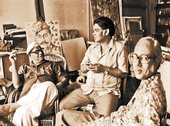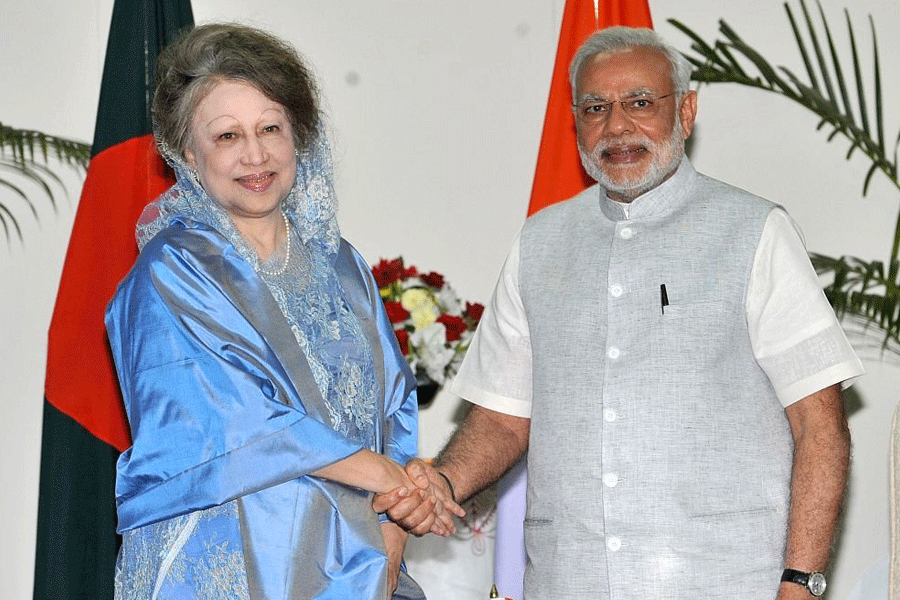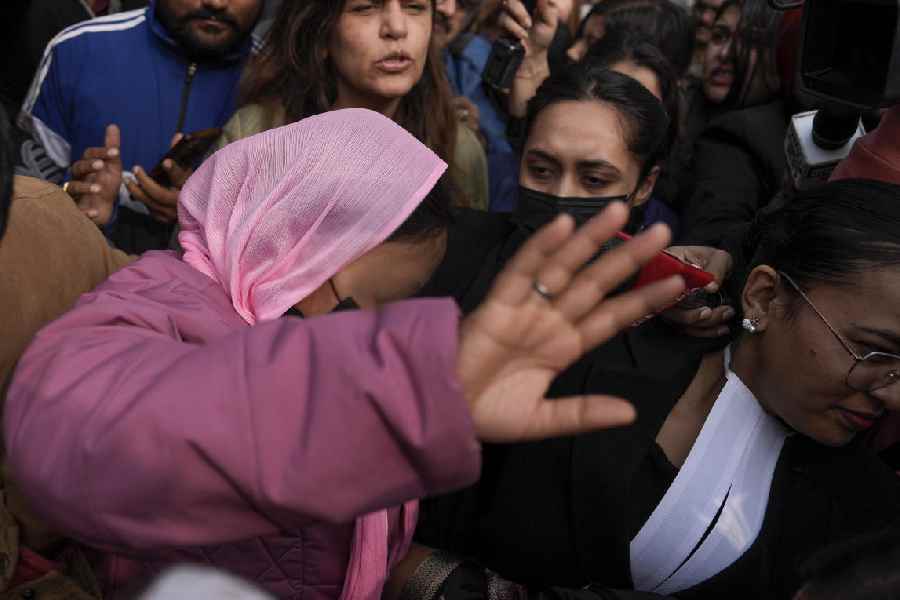 |
| Artist Nirode Mazumdar (left) with Sunil Gangopadhyay and (right) Shakti Chattopadhyay. A Telegraph picture |
If Hamlet’s great soliloquy “To be or not to be” is a watershed in the history of English literature, then Shakti Chattopadhyay’s “Jete pari kintu keno jabo” (I could go away, but why would I) remains one of the most enduringly mysterious monologues in Bengali poetry.
Given the pervasive presence of the human voice behind Chattopadhyay’s verse, his poems inspire an immediate association with monologues: his words are meant to be heard, spoken out, read aloud, not silently. And it was Chattopadhyay himself who was best able to capture the rustle of emotions that coursed through his lines.
At the Town Hall on November 26, the programme organised by Abrityilok to observe Chattopadhyay’s 75th birthday began with a playback of the late poet reading one of his most memorable poems, Hemanter aranye ami postman dekhechhi… (I have seen many a postman wandering in the forest of autumn).
The slightly croaky acoustics notwithstanding, the recording conveyed the true measure of Chattopadhyay’s eccentric genius. A strange medley of inflections floated along the lines, heavy with melody, perfect in rhyme, sanguine, soothing yet crazed.
It could well have been the mad Lear on the heath imagining postmen wandering into the dusky jungles, filling up their sacks with the fallen, yellow leaves.
The gathering was semi-formal, comprising writers, singers and artists who had either personally known Chattopadhyay or admired his work.
Dibyendu Palit began the evening with a few reminiscences. He spoke most arrestingly about how Ganesh Pyne’s Boatman series was inspired by Chattopadhyay’s poem Ami shechchhachari. This was followed by delightful anecdotes by Sunil Gangopadhyay and Sarat Kumar Mukhopadhyay. The last two, along with the late Sandipan Chattopadhyay and Shakti Chattopadhyay, formed the Formidable Four, who reigned over Calcutta in the Sixties and the Seventies.
They were part of the Hungry Generation (Bengal’s answer to the Beats), who were known as much for their political and literary activities as for their benevolent anarchism.
Rootless, aggressively anti-establishment, inspired by a veritable hodge-podge of ideas, from American transcendentalism to the native occultism, these young men (and women) caused a cultural revolution of sorts in their time, and laid the foundation of modernism in Bengal.
Allen Ginsberg joined them briefly. The vibrantly mutual exchange of feelings, the traffic in occidental and oriental mysticism, psychedelic drugs and novel ways of getting high seemed to have left their mark on the poetic idiom of Allen, Shakti and Co.
Besides the many autobiographical pieces by Sunil and Shakti, the most fascinating recent account of this time can be found in Deborah Baker’s A Blue Hand.
Underneath the veneer of restlessness, Chattopadhyay was a deeply cerebral writer, keenly attentive to the finer points of prosody. He spent years writing prose before emerging as a poet, striving, like W.H. Auden, for a clinical precision. He did not subscribe to the romantic ideal of poetry being a spontaneous outburst of emotions; verse for him was an exercise in self-control, in mastering the method, means and emotions. The more prolific a poet was, the more he tended towards “excess”, Chattopadhyay rued.
Chattopadhyay may have been remembered for his boisterousness, but poet Jaydeb Basu emphasised a generally neglected and unknown aspect of his character: his capacity for affection, a unique way of making himself available to strangers and his unfailing love for his family.
The rift between Chattopadhyay’s outward flamboyance and inner calm is also evident from his poems. At his best, Chattopadhyay could be bristling, provocative, even exasperating (as in Ami shechchhachari); but like a magic spell he could weave a few lines to drift off to a faraway land (as in Mone porlo, tomay porlo mone).










